The pulley shown in figure has a moment of inertias I about its axis and mass m. find the time period of vertical oscillation of its centre of mass. The spring has spring constant k and the string does not slip over the pulley.
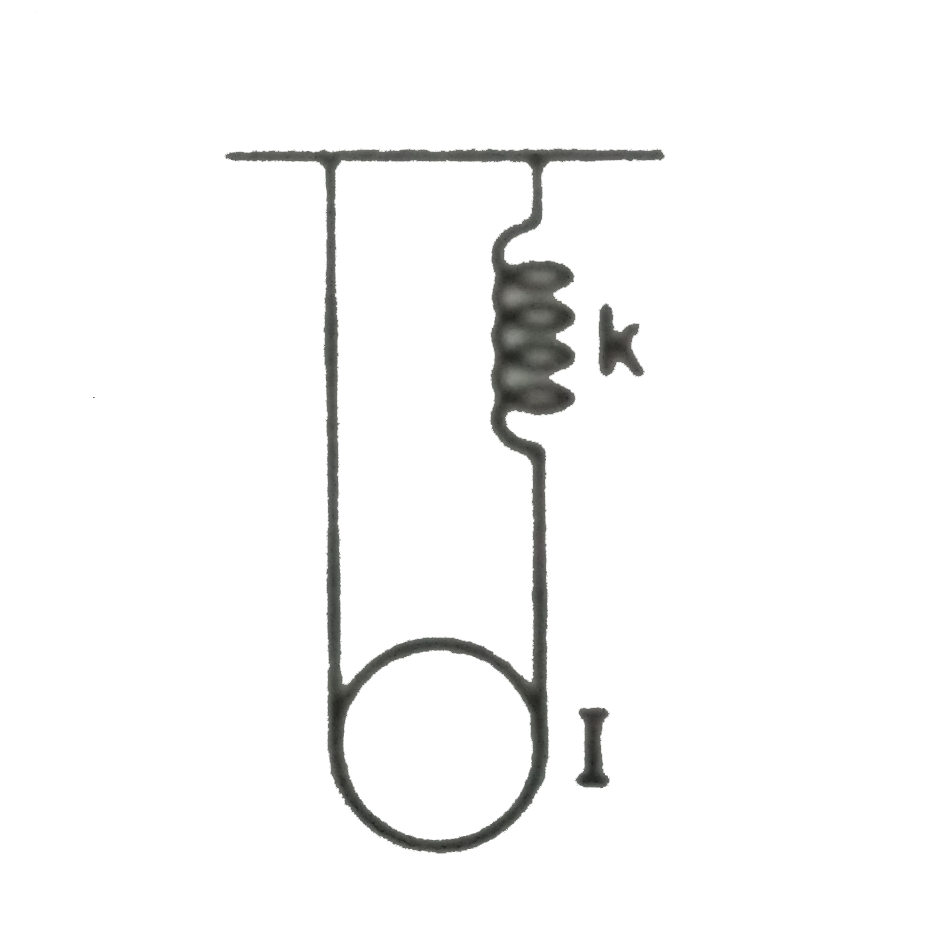
Let us first find the equilibrium position. For rotatioN/Al equilibrium of the pulley, the tensions in the two strings should be equal. Only then the torque on the pulley wil be zero. Let this tension be T. The extension of the spring wil be y=Tk, as teh tension in the spring will be the same as the tension in the string. For translatioN/Al equilibrium of the pulley.
2T=mgor2ky=mg,orly=mg2k
The spring is extended by a distance mg2k when the pulley is in equilibrium.
Now suppose the centre of the pulley goes down further by a distance x. The total inrease in tehlengthof the stringplus the springnis 2x(x on the left of the pulley and x on the right). As the string has a constant length, the extension of the spring is 2x. The energy of the system is
U=12iω2+12mv2−mgx+12k(mg2k+2x)2
=12(1r2+m)v2+m2g28k+2kx2
As the system is conservative dUdt=0, ltbr> giving 0=(Ir2+m)vdvdt+4kxv
ordvdt=−4kx(Ir2+m)
or a=−ω2x,whereω2=4k(Ir2+m)
Thus the centre of mass of the pulley executes a simple harmonic motion with time period
T=2π
⎷Ir2+m4k.
Topper's Solved these Questions
- SIMPLE HARMONIC MOTIONBOOK - HC VERMA ENGLISHCHAPTER - SIMPLE HARMONIC MOTIONEXERCISE - Objective -1
21 Videos
- SIMPLE HARMONIC MOTIONBOOK - HC VERMA ENGLISHCHAPTER - SIMPLE HARMONIC MOTIONEXERCISE - Objective-2
15 Videos
- SIMPLE HARMONIC MOTIONBOOK - HC VERMA ENGLISHCHAPTER - SIMPLE HARMONIC MOTIONEXERCISE - Question for short Answer
15 Videos
- ROTATIONAL MECHANICSBOOK - HC VERMA ENGLISHCHAPTER - ROTATIONAL MECHANICSEXERCISE - Questions for short Answer
21 Videos
- SOME MECHANICAL PROPERTIES OF MATTERBOOK - HC VERMA ENGLISHCHAPTER - SOME MECHANICAL PROPERTIES OF MATTEREXERCISE - Objective-2
7 Videos
Similar Questions
The pulley shown in figure has a moment of inertias I about its xis and mss m. find the tikme period of vertical oscillastion of its centre of mass. The spring has spring constant k and the string does not slip over the pulley.

View SolutionThe pulley shown in figure has a moment of inertia I about it's axis and its radius is R. Find the magnitude of the acceleration of the two blocks. Assume that the string is light and does not slip on the pulley.
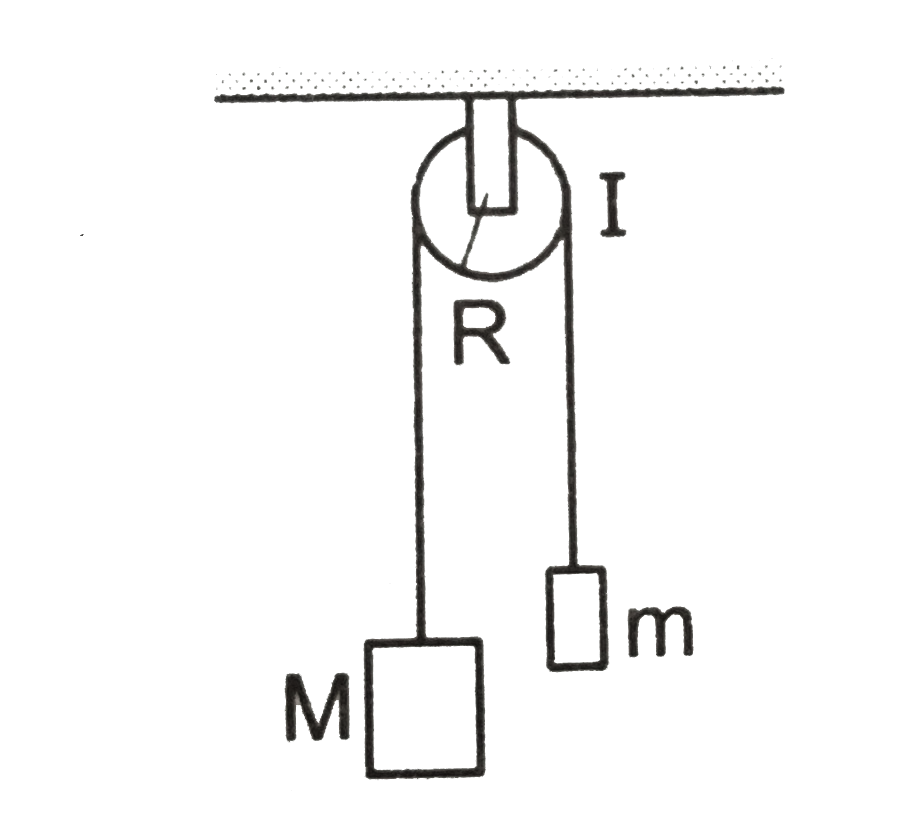
View SolutionFind the time period of oscillation of block of mass m. Spring, and pulley are ideal. Spring constant is k.

View SolutionFigure shows two blocks of masses m and M connected by a string passing over a pulley. The horizontal table over which the mass m slides is smooth. The pulley has a radius r and moment of inertia I about its axis and it can freely rotate about this axis. Find the acceleration of the mass M assuming that the string does not slip on the pulley.
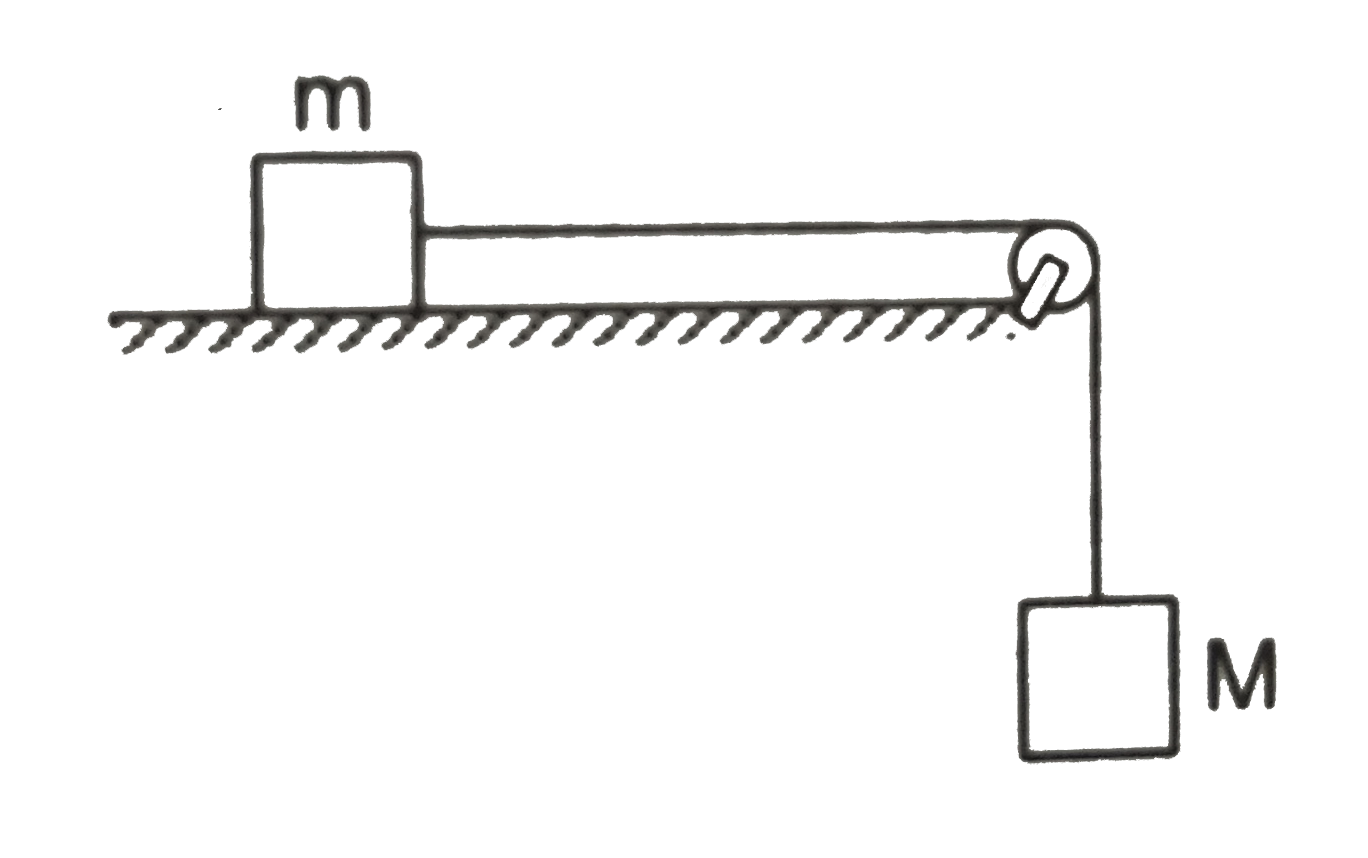
View SolutionFind the time period of the oscillation of mass m in figure a,b,c what is the equivalent spring constant of the pair oif springs in each case?

View SolutionConsider the situation shown in the figure. A mass is hanging from a inextensible string which is passing over a pulley. The pulley itself is attached to a massless spring of stiffness k as shown in the figure. Find the time period of vertical oscillations of mass m if pulley is slightly displaced from its mean position. Assume that string does not slip over pulley.
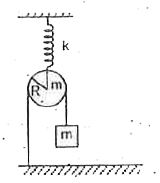
View SolutionSpring mass system is shown in figure. find the time period of vertical oscillations. The system is in vertical plane.
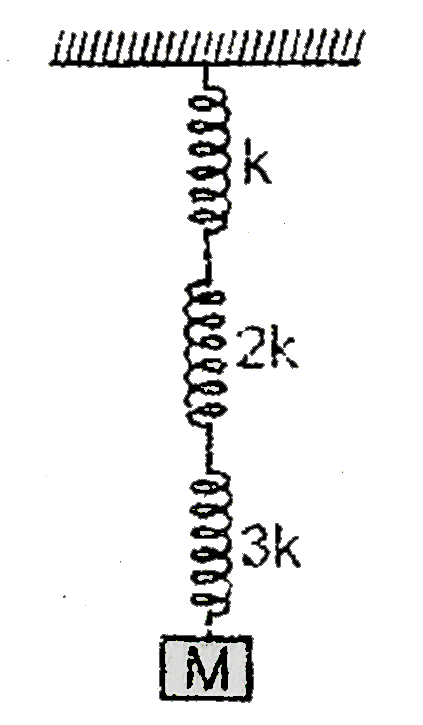
View SolutionIn the situation as shown in figure time period of small vertical oscillation of block will be - (String, springs and pulley are ideal)
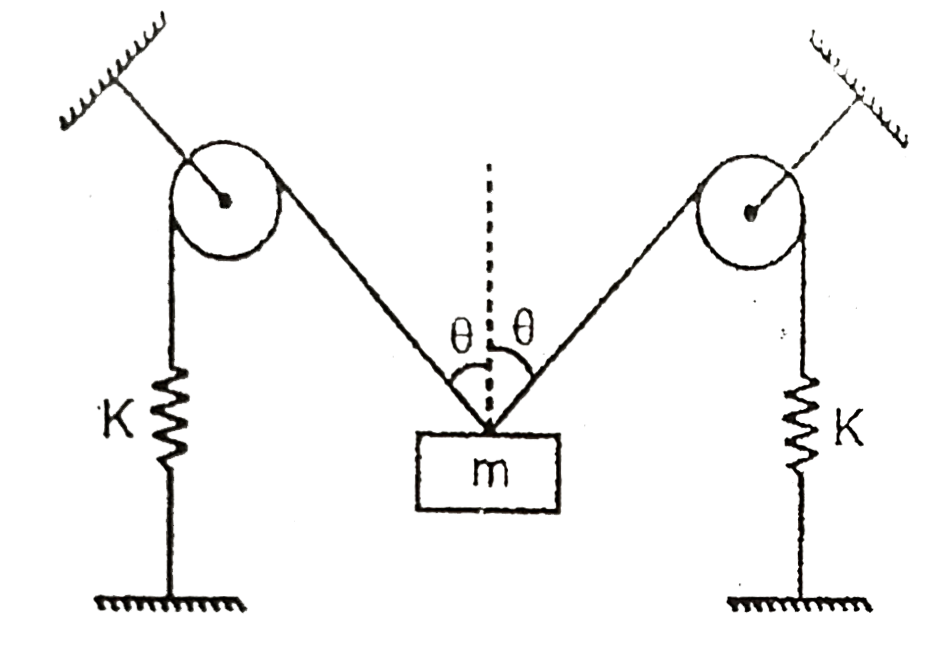
View SolutionThe pulley shown in figure has a radius 10 cm and moment of inertia 0.5 kg-m^2 about its axis. Assuming the inclined planes to be frictionless, calculate the acceleration of the 4.0 kg block.
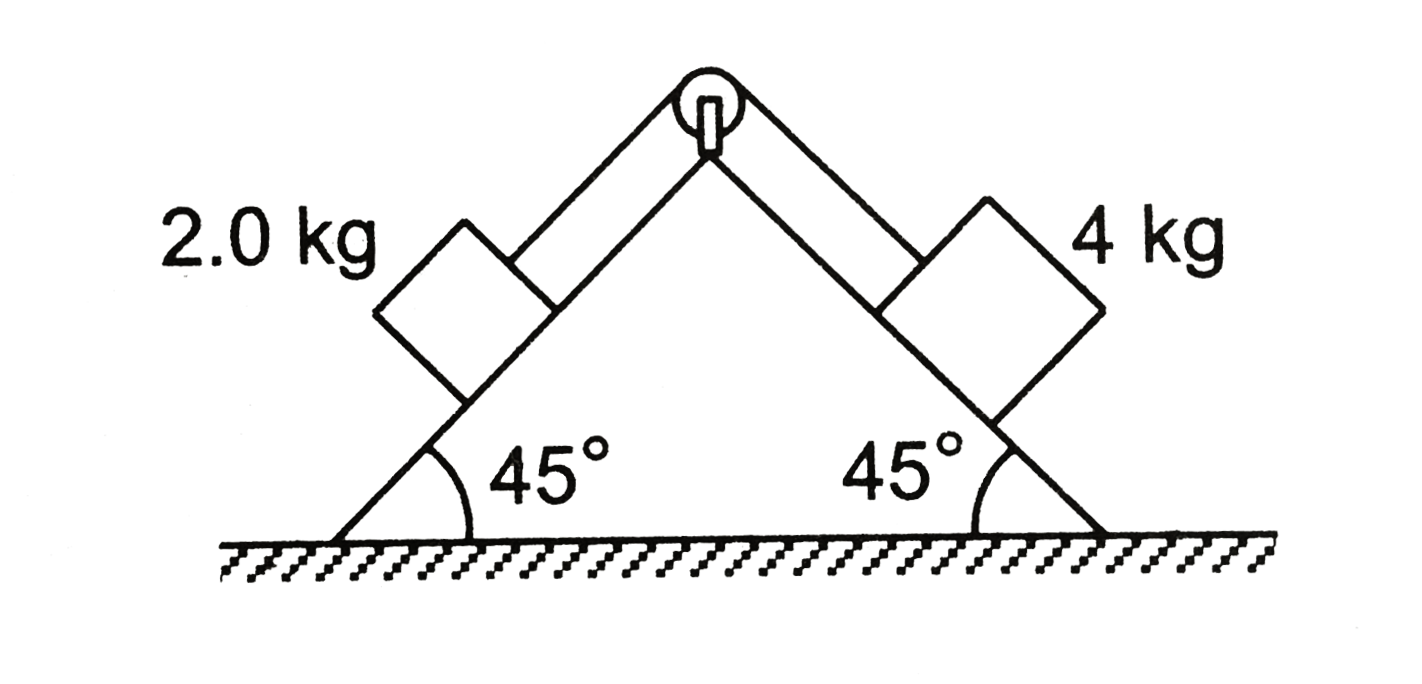
View SolutionTwo masses m and M(m<M) are joined by a light string passing over a smooth and light pulley (as shown)
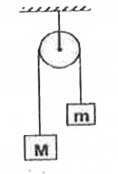
View Solution
